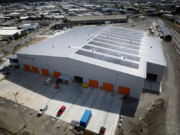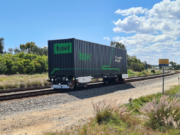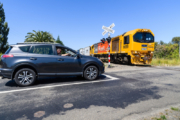KiwiRail: A sustainable and logical transport choice for New Zealand
In 2024, KiwiRail set an ambitious carbon emissions reduction target to reduce gross Scope 1 and 2 carbon emissions by 40 per cent by 2035 against a 2018/19 baseline. This ambitious but feasible target supports Kiwirail’s long-term goal to be net zero carbon by 2050.
Continue reading








